When I first set foot in Calabria, that southernmost tip of mainland Italy, I felt my senses light up with two flavors that really define the place: fiery chili peppers and the aromatic zing of bergamot.
Locals talk about these ingredients like they’re family—honestly, they’re so much more than just food here. Calabrian chili peppers have earned love across Italy and beyond for their vibrant red color, their just-right kick of heat, and the way they can turn a plain dish into something unforgettable.
You spot these small, round chilies everywhere—crushed into oils, blended into the famous ‘nduja sausage, or just served whole next to meats and cheeses.
Then there’s bergamot. Its sharp, sour punch is such a fascinating contrast to the chili heat. Strolling through Calabrian markets, I always see vendors selling both, each with a story about how their family has grown them for generations.
What really struck me about Calabrian cooking is how these bold flavors create something both rustic and, weirdly, kind of sophisticated. Exploring those seaside towns and mountain villages, I noticed Calabrians use these ingredients with a kind of quiet confidence. Just a pinch of chili, a whiff of bergamot—never too much, always just enough to lift the region’s seafood, pastas, and slow-cooked meats.
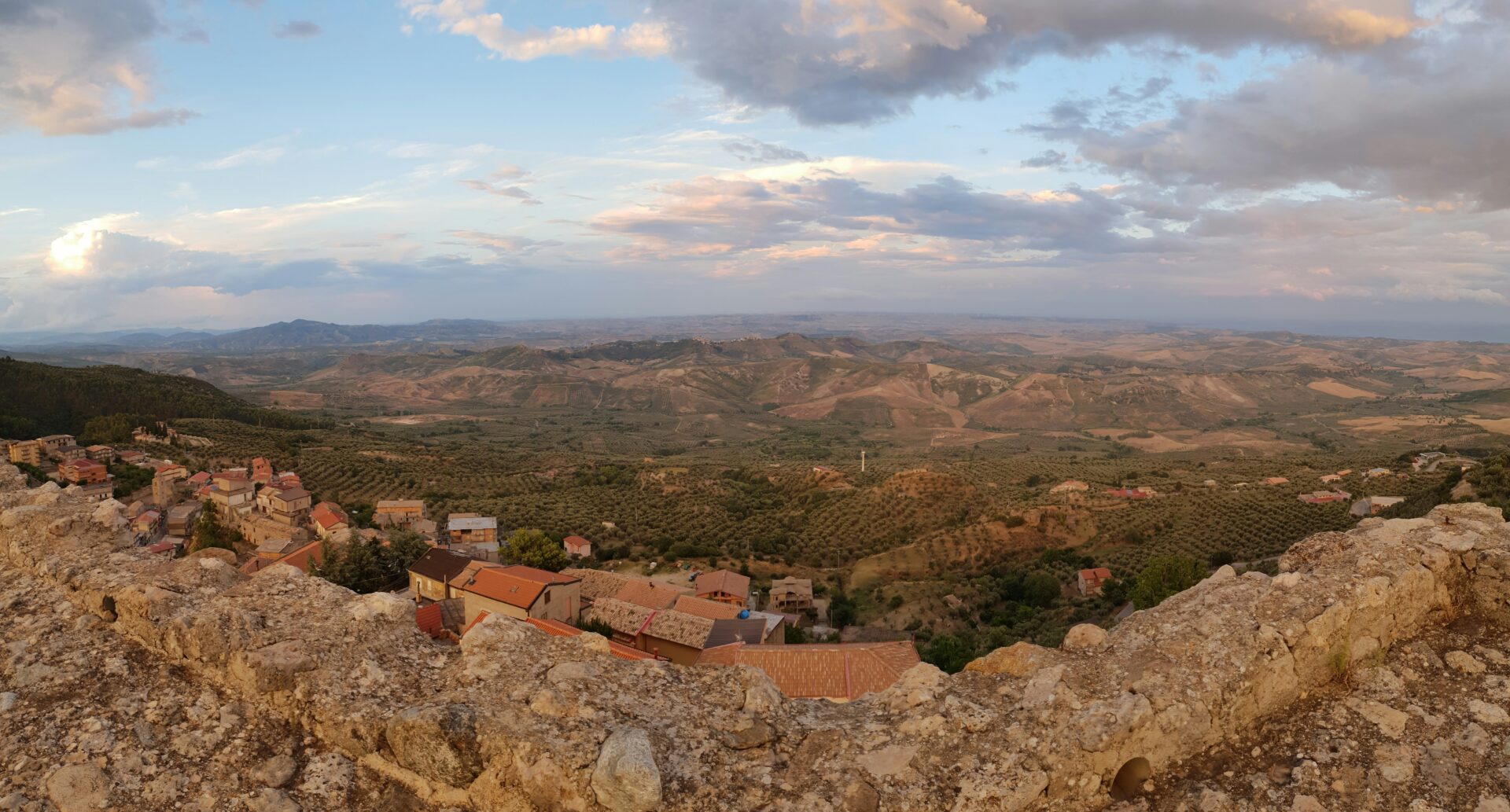
Calabrian Chili Peppers: Fiery Heritage and Culinary Symbols
Calabrian chili peppers really are the soul of southern Italian cooking. These bright red beauties bring both fire and depth to dishes that have shaped the region for centuries.
Varieties and Origins of Chili Peppers
The most famous Calabrian chili is the “diavolicchio”—the little devil. It’s small, round, and bright red. These peppers arrived from the Americas in the 16th century, and Calabria’s sunny, Mediterranean weather made them thrive.
I’ve seen these peppers everywhere, hanging in clusters from balconies, drying in the sun. Farmers string them together in long braids called “serte” or “collane.”
They can be medium or pretty hot, but people prize them for their flavor, not just the heat. Unlike some chilies that just burn, Calabrian peppers add a fruity, almost smoky taste that’s hard to forget.
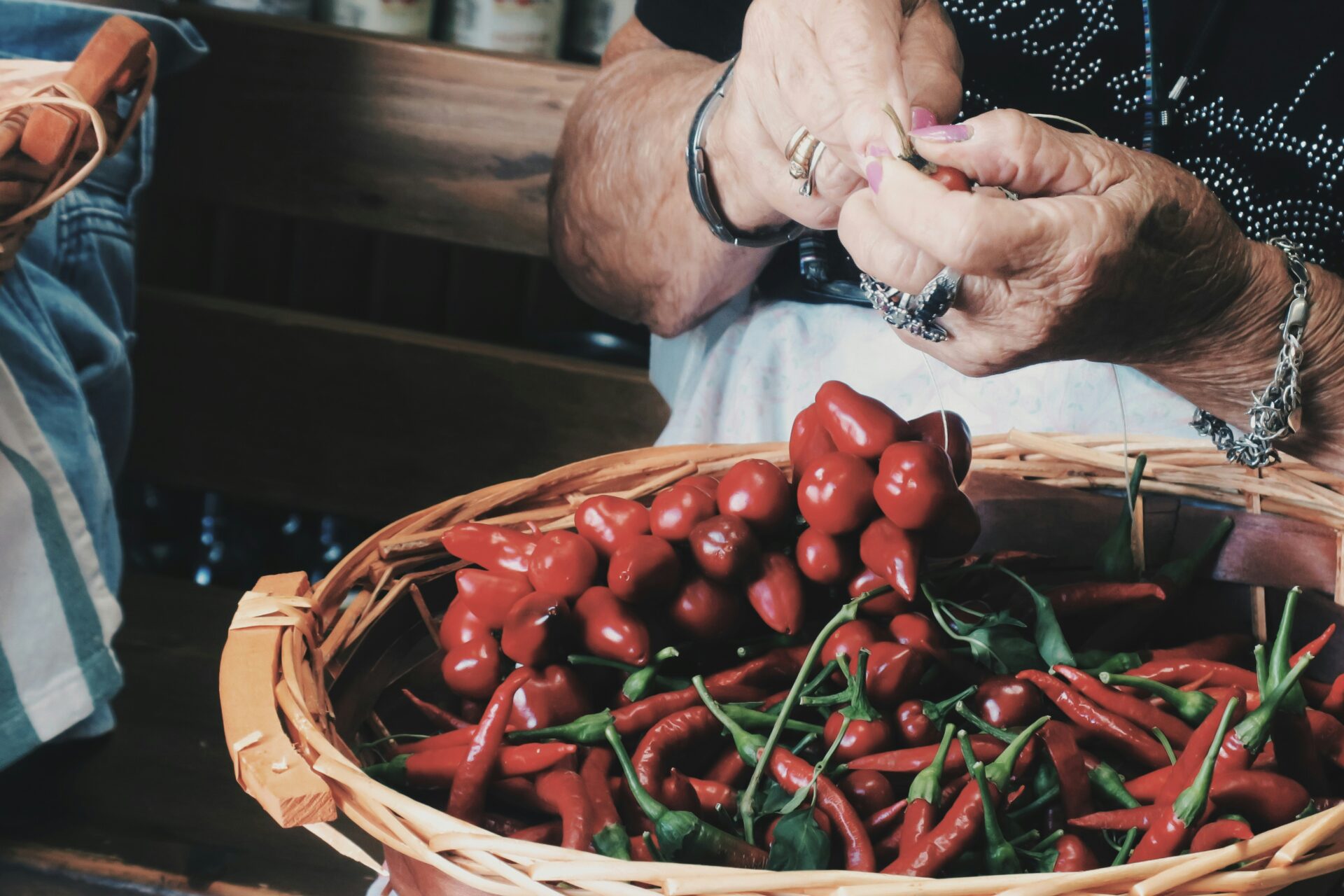
Traditional Uses in Calabrian Cuisine
In Calabrian markets, these peppers show up in every form—fresh, dried, crushed, or preserved in oil.
Locals add chili to almost everything! I’ve tried them in pasta, meat, and—believe it or not—even some desserts. “Peperoncini sott’olio,” or peppers preserved in olive oil with herbs, is a classic.
Most homes have a jar of crushed chili flakes (peperoncino) on the table. The peppers also star in chili-infused honey and oils, which make great gifts if you’re looking for a souvenir.
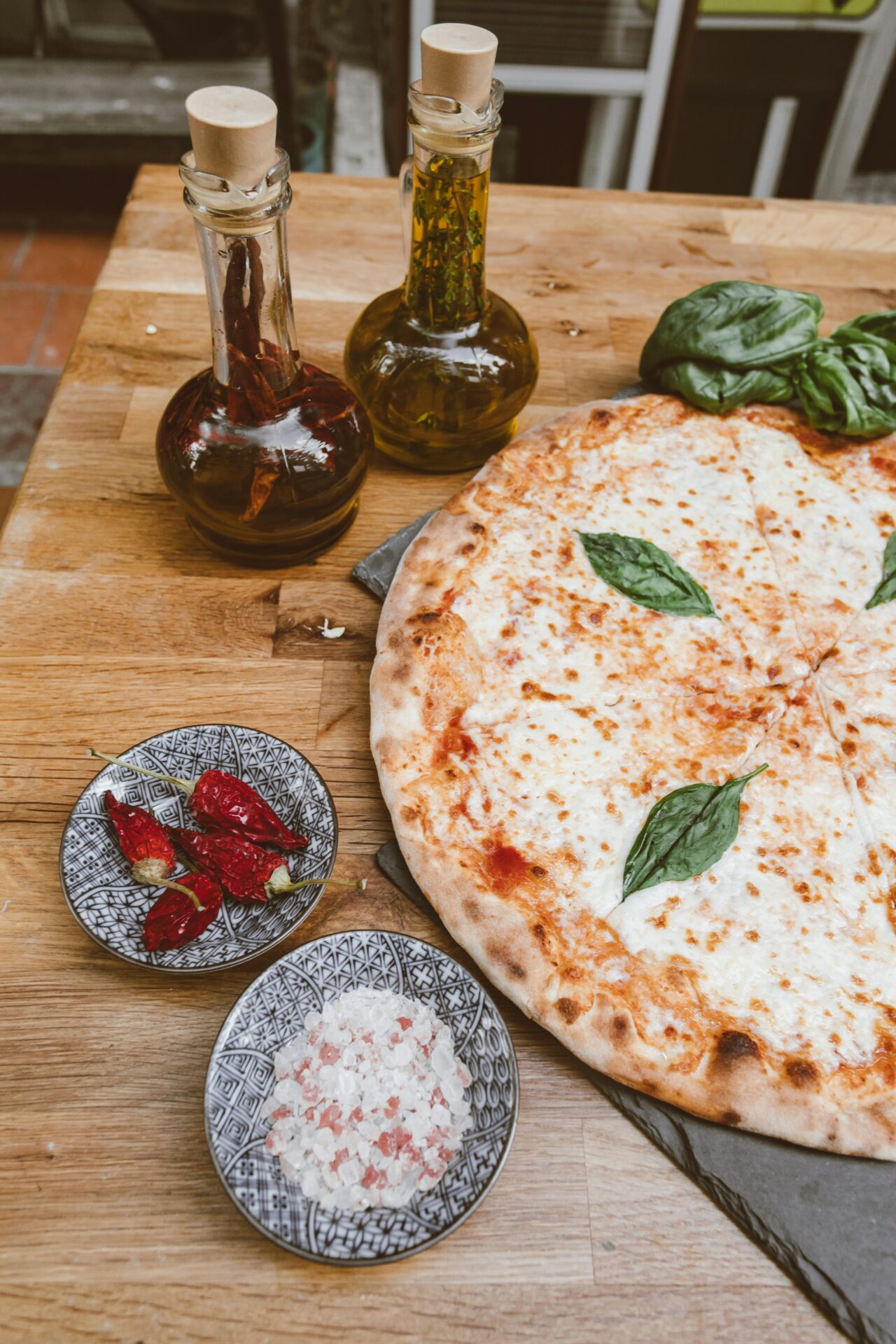
Chili Pepper’s Role in Calabrese Cultural Identity
The chili pepper isn’t just food here—it’s a symbol. I’ve spotted the pepper motif in art, jewelry, even those little “cornicelli” talismans.
Calabrians are proud of their spice tolerance. They say, “You can tell a true Calabrese by how they handle heat.” It’s not just about taste—it’s about resilience and passion.
Every year, towns across Calabria celebrate the chili pepper. The Peperoncino Festival in Diamante draws thousands for cooking demos, eating contests, and plenty of local pride.

‘Nduja: The Iconic Spicy Spread
‘Nduja might be the most famous Calabrian product out there. It’s a spicy, spreadable salumi that’s not for the faint of heart.
I tried ‘nduja for the first time on warm bread in a tiny trattoria in Spilinga, where it was born. That mix of finely ground pork and loads of local chili just melts when it hits heat.
Traditionally, they stuff the mixture into casings and smoke it gently. These days, chefs everywhere are using ‘nduja in pizzas and pasta sauces. Its fame has really put Calabrian flavors on the global map.

Bergamot: Calabria’s Citrus Gem
Bergamot is one of Calabria’s most precious treasures—a citrus fruit that has shaped the region’s flavors and identity for centuries.
What Makes Calabrian Bergamot Unique
When I first wandered into a bergamot orchard, I couldn’t help but notice how unique these trees look. The fruit is smaller than a grapefruit but bigger than an orange, with a yellow-green peel when ripe.
Calabrian bergamot only really grows along the Ionian coast, especially near Reggio Calabria. The microclimate there is just right for this picky citrus.
The aroma hits you right away—floral, citrusy, sweet, tart, and a little bitter all at once. No wonder nearly 90% of the world’s bergamot comes from this tiny corner of Italy.
Local families have tended these groves for generations. Walking among the trees, you can feel the pride people have in their bergamotto.

From Perfume to Plate: A Multisensory Citrus
I’ve never met another fruit as versatile as bergamot. Its most famous use is probably in Earl Grey tea—it’s what gives the blend that unforgettable flavor.
Perfumers have prized bergamot oil for centuries. When I visited Calabria, I learned that it shows up in about half of women’s perfumes and a third of men’s colognes worldwide.
Locals also use bergamot for its medicinal properties. They swear by it for fevers and digestion, and some studies even say it helps lower cholesterol.
Bergamot’s scent fills Calabrian homes, too. People use diffusers to create a calming vibe—honestly, it works.
Bergamot in Sweet and Savory Gastronomy
Bergamot shines in the kitchen, too. Bergamot marmalade is a favorite of mine—less sweet than orange, but way more aromatic.
Pastry shops love to show off with:
- Bergamot-infused cookies (biscotti al bergamotto)
- Bergamot honey drizzled over ricotta
- Bergamotto gelato—trust me, it’s unique
- Candied bergamot peel in dark chocolate
For savory dishes, chefs use bergamot zest to brighten seafood. I once had sea bass baked with bergamot slices and olive oil—so simple, but it just screamed Calabrian cuisine.
Bergamot and chili peppers team up in marinades and dressings. That sweet-hot combo takes grilled meats and veggies to another level.
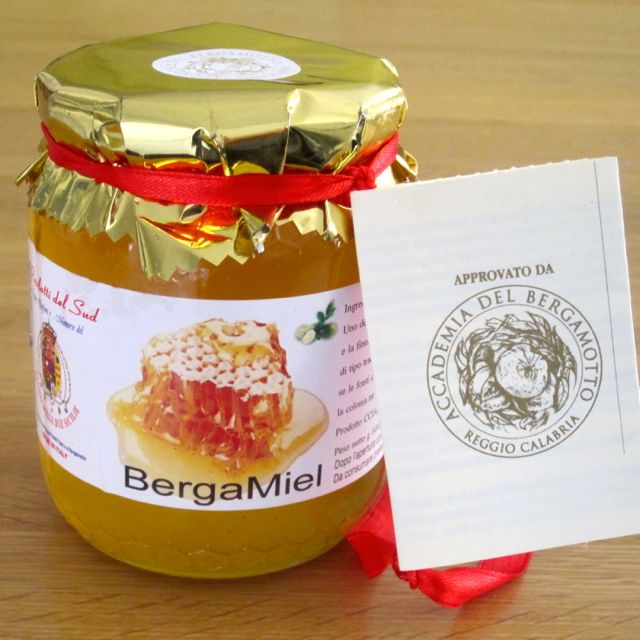
Bergamot Juice and Cocktails
Fresh bergamot juice is something else—intensely fragrant, sweet and sour, and just so different from any other citrus. It’s tough to find outside Calabria, but local cafés serve it in winter.
You have to try these bergamot cocktails:
- Bergamot Spritz: Prosecco, bergamot juice, and a splash of soda
- Calabrian Mule: Vodka, bergamot juice, and ginger beer
- Bergamot Negroni: The classic with bergamot-infused gin
Bartenders here love making bergamot syrups and liqueurs. That citrusy punch adds real depth to drinks, alcoholic or not.
And if you want something non-alcoholic, bergamot lemonade is perfect on a hot Calabrian day. The sweet, sour, and floral notes make it unforgettable.

Signature Calabrian Dishes and Flavor Profiles
Calabrian food bursts with bold flavors, balancing chili heat with the region’s unique ingredients. Local dishes mix spicy, sweet, and savory in a way that reflects the rugged land and the sea.
Appetizers with a Punch
Whenever I’m in Calabria, I kick off my meal with ‘nduja. That spicy, spreadable pork salumi on crusty bread is the best intro to the region’s obsession with heat.
Capocollo di Calabria is another must—cured pork neck with smoky, spicy notes. It pairs so well with local cheeses like pecorino.
If you love seafood, try marinated anchovies with lemon and chili. The citrus cuts the richness, and the chili gives that Calabrian punch.
Mixed veggie antipasti—wild fennel, artichokes, eggplant in olive oil—show off the region’s farm bounty, always with a spicy twist.

Hearty Mains: Lamb, Mackerel, and More
Lamb here gets slow-cooked with wild fennel, potatoes, and, of course, chili. The meat soaks up all the flavor and just melts in your mouth.
Mackerel is a coastal staple—usually grilled with olive oil, lemon, and a sprinkle of peperoncino. I love how the fish’s oils and the chili heat balance each other.
Pasta e alici (pasta with anchovies) is humble but so good. Breadcrumbs and chili turn simple ingredients into something special.
Fileja pasta with ‘nduja sauce is a true Calabrian classic. The hand-rolled pasta just grabs that spicy sauce—honestly, I always go back for seconds.

Vegetables, Cheeses, and Creative Pairings
Wild greens are everywhere in Calabrian cooking. I’ve had plenty of meals with bitter greens sautéed with garlic, chili, and a splash of bergamot juice for brightness.
Parmigiana alla calabrese is a spicier riff on the classic, with eggplant, local cheeses, and a tomato sauce loaded with Calabrian chilies.
The goat and sheep cheeses here are something else. Caciocavallo Silano DOP has this sweet-sharp thing going on, especially with local honey and bergamot preserves.
For the real deal, try peperonata calabrese—a colorful stew of sweet and hot peppers. It’s simple but so satisfying, especially with a hunk of bread to mop up the juices.
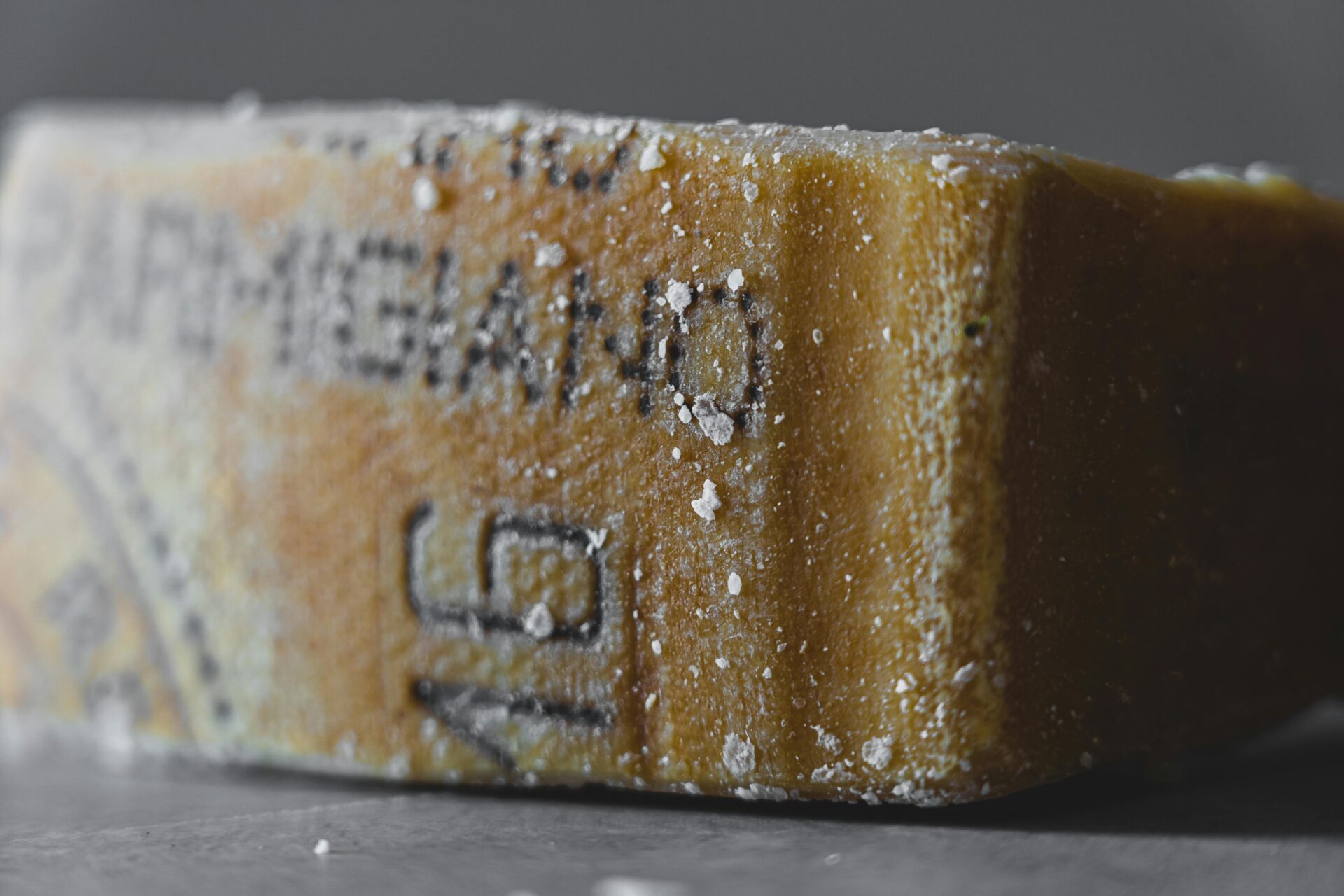
Sweet Indulgences: Bergamot and Mediterranean Desserts
Bergamot takes Calabrian sweets to another level. Its citrus tang balances out the sugary treats in the best way.
Pastry Traditions and Modern Twists
Last summer, I discovered that bergamot is the secret ingredient in so many local pastries. Bakers add the grated peel for a sharp, aromatic kick that keeps things from getting too sweet.
“Nzuddi” cookies—crunchy outside, chewy inside—mix bergamot zest with almonds and honey. They’re seriously addictive.
Some modern pastry chefs get creative with bergamot. I tried cannoli filled with bergamot cream, and it totally changed my idea of the classic. You can even find bergamot-flavored gelato that somehow captures the fruit’s whole personality.

Cane Sugar, Cinnamon, and Calabrian Panettone
Calabrian desserts lean on local cane sugar and warm spices like cinnamon. That combo with bergamot just works.
The regional panettone surprised me. It’s not like the Milanese one—instead, Calabrian panettone usually comes with:
- Bergamot-infused sugar glaze
- Candied bergamot peel
- Cinnamon and local honey
Bakers here love to tell you that their panettone recipe is a family secret. Each family tweaks the bergamot and cinnamon ratio to make it their own.

Famous Delicacies: Delizie di Nonna Mica and White Apple
I stumbled on Delizie di Nonna Mica in a tiny Calabrian bakery, and honestly, it was love at first bite. These little dome-shaped cakes pack a punch: soft sponge cake hugs a bergamot-scented pastry cream, and the whole thing gets finished with a delicate bergamot glaze.
The bakery owner told me her grandmother whipped up the recipe during a wild bergamot harvest years ago. Now, people trek across Calabria just to try these sweet gems.
White Apple is another local favorite that really shows off bergamot’s range. The name’s a bit of a misdirect—there’s not a single apple in it. Instead, you get a light, crisp meringue filled with creamy bergamot goodness.
That snap when you bite in, followed by the smooth, citrusy filling? It’s kind of magical.
Travel, Culture, and the Art of Gastronomy in Calabria
Exploring Calabria isn’t just about seeing the sights—it’s about diving into a world where food, tradition, and scenery all blend together. This corner of southern Italy draws you in with its markets, lively festivals, and gorgeous seaside towns.
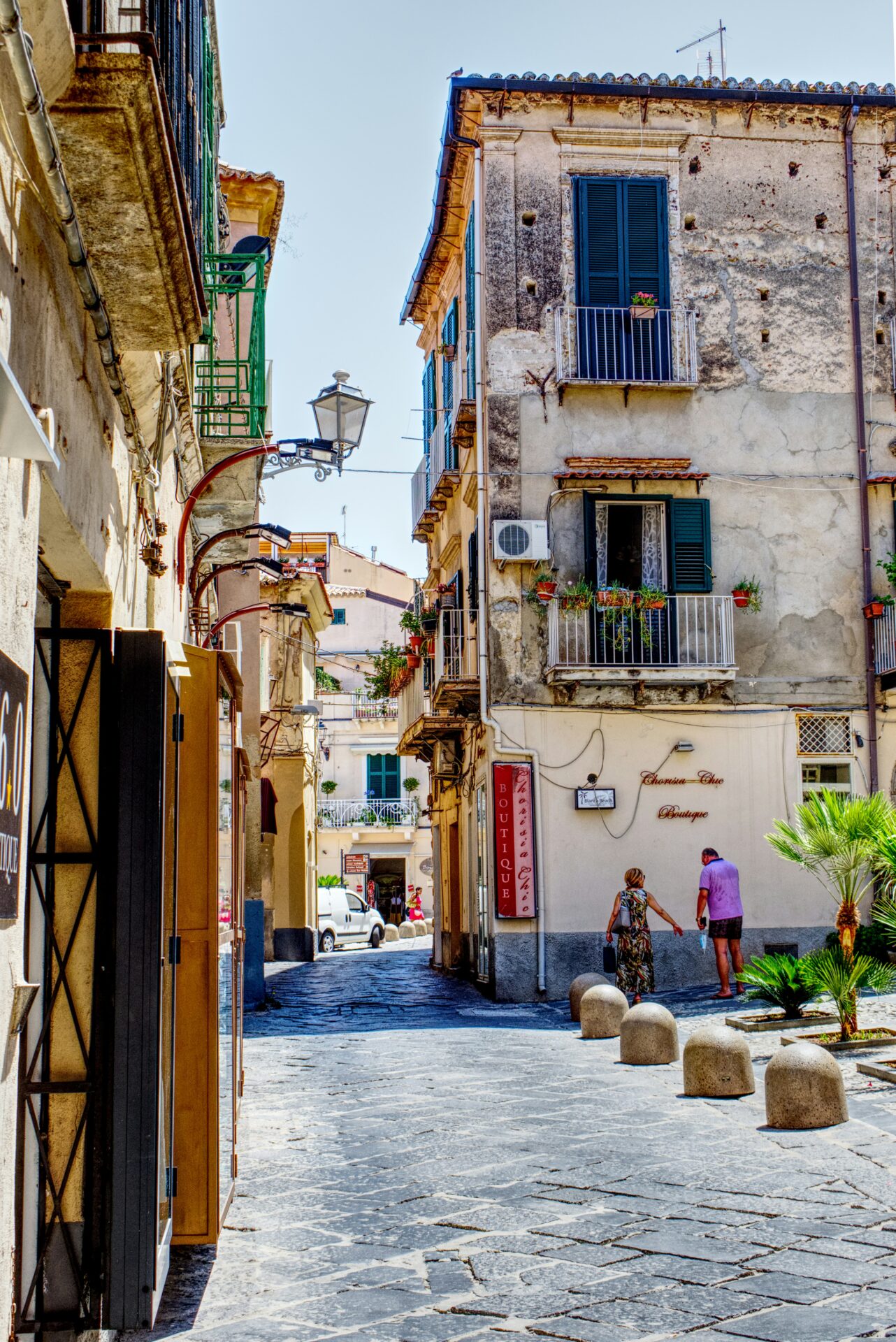
Markets, Festivals, and Local Celebrations
I always find the markets here buzzing with life. Every town seems to have a weekly market, and vendors set up with colorful produce, just-made cheeses, and piles of fragrant spices.
The air is thick with tempting smells and chatter. It’s honestly hard not to buy everything.
One celebration I look forward to is the Festa della Madonna della Consolazione in Reggio Calabria. Every September, the city comes alive with a mix of devotion and amazing street food.
People flock to honor the patron saint, but let’s be real—everyone’s also here for the ‘nduja and bergamot treats.
Other festivals pop up year-round. The Peperoncino Festival in Diamante is a fiery tribute to Calabria’s love of hot peppers. You’ll also find sagre dedicated to mushrooms, wine, and of course, bergamot.
Live tarantella dancers spin through the crowds, and the music, food, and energy just pull you in.
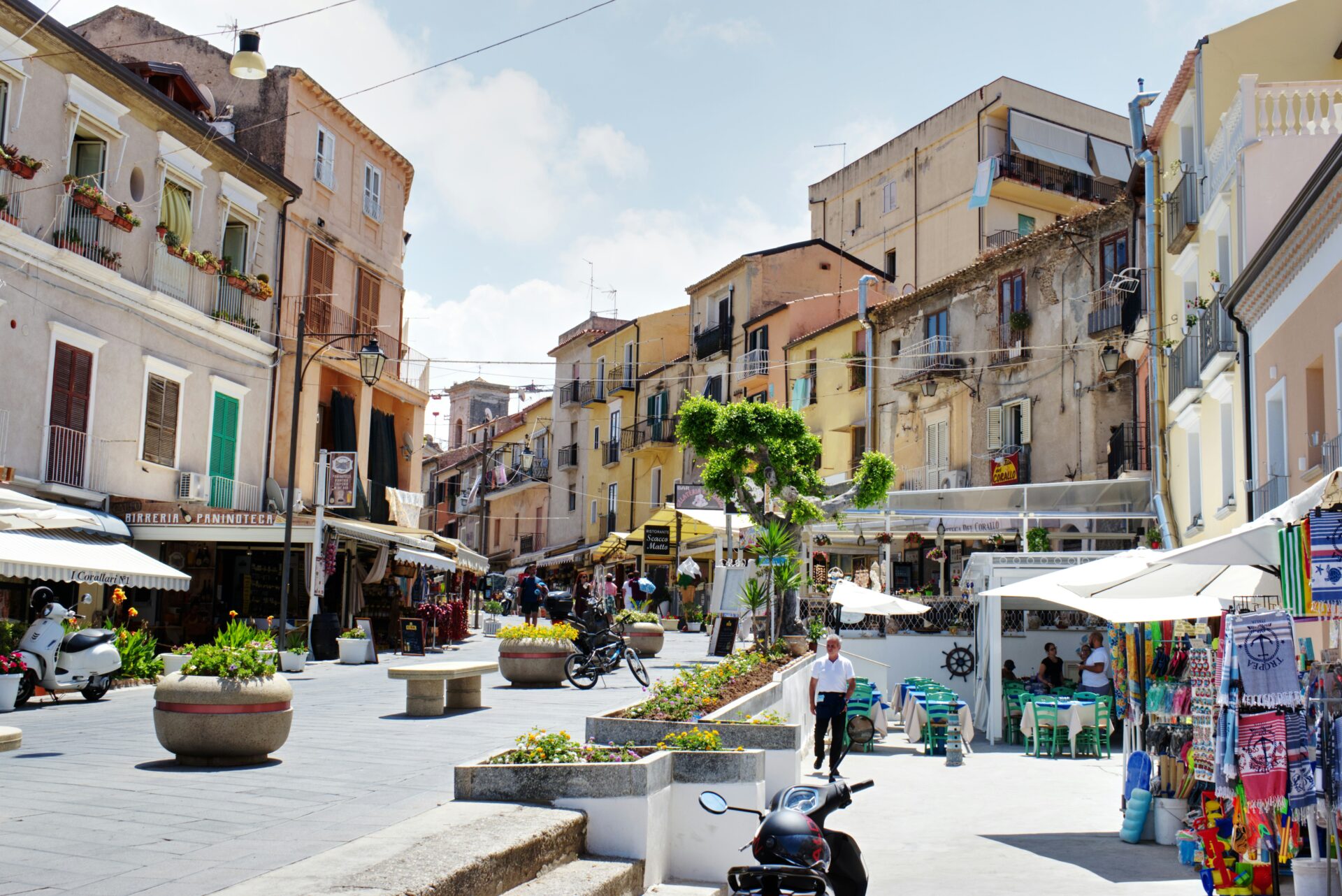
Exploring Calabria: From Reggio Calabria to Tropea
I usually start my Calabrian trips in Reggio Calabria. The promenade there really is as stunning as Hemingway claimed.
You can look out and spot Sicily across the water, then wander over to the National Archaeological Museum to see the famous Bronzes of Riace.
Calabria sits wedged between two seas: the Tyrrhenian and the Ionian. The beaches are wildly different depending on which coast you visit.
Tropea is my go-to for beach days. Those cliffs and turquoise waves never get old.
The Norman Castle perched above the town gives you a view that’s honestly hard to beat.
When I want to get away from the coast, I head inland. Catanzaro’s old bridges and winding streets are a treat.
Crotone’s ruins take you back in time, and in Pizzo, you absolutely have to try the tartufo ice cream. There’s also an Aragonese castle worth a peek.
Hiking trails crisscross Calabria’s mountains, giving you a break from the sun and sand. I like Sila National Park for its cool forests, especially when the summer heat kicks in.

Savoring Food with Art, Music, and Nature
Meals in Calabria go way beyond just eating—they’re a full-on cultural moment. Local restaurants hang up art from Calabrian painters, turning dinner into a little gallery visit.
After dinner, I can’t resist a walk along the beach. The sound of traditional music drifts from open doors, and every now and then, you’ll catch an impromptu tarantella right on the street.
The energy is contagious.
Some spas here use local ingredients like bergamot and olive oil. I once spent an afternoon soaking in thermal baths near Catanzaro, just watching the mountains turn pink in the sunset.
For something really special, I recommend a picnic in a bergamot grove near Reggio Calabria. The citrus scent hangs in the air, and you can nibble on local treats with the Ionian Sea sparkling in the background.
That’s Calabria at its best.

Culinary Innovation and the Future of Calabrian Flavors
Calabrian food is changing, but it never loses its roots. Chefs here are dreaming up new ways to use classic ingredients like those fiery chilis and the unmistakable bergamot.
Emerging Gastronomic Trends
I’ve noticed a new wave of young chefs shaking things up. They keep the old dialect names for dishes, but the presentations are fresh and modern.
Tasting menus are popping up everywhere, showing off everything from mountain mushrooms to fresh seafood. The humble ‘nduja, once just a spread for bread, now stars alongside things like foie gras and scallops.
Chefs are also embracing slow food values. They’re digging up forgotten grains and old-school veggies that haven’t seen a kitchen since their grandparents’ day.
Sustainability is a big deal, and you can taste the difference.
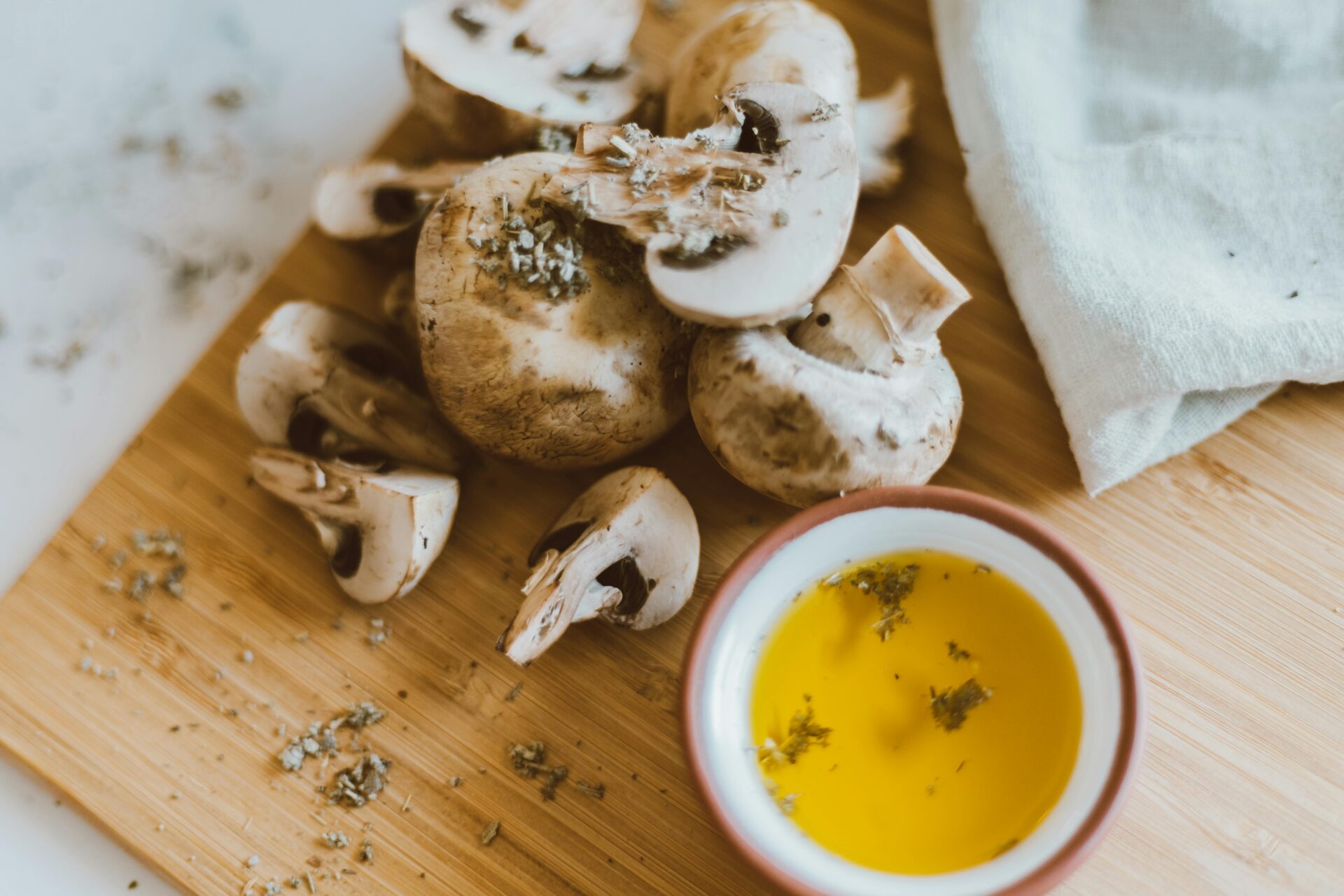
Fusing Italian and Calabrian Elements
The fusion going on in Calabrian kitchens is honestly exciting. Chefs borrow tricks from Campania but keep that unmistakable Calabrian punch.
I’ve tasted pasta from the north, but with a bergamot sauce that could only have come from here. The bitter kick of amaro liqueurs finds its way into savory dishes, and Calabrian chili sneaks into recipes from all over Italy.
Water and garlic are still the backbone of so many dishes. But now, chefs are fermenting, smoking, and transforming these basics into something totally new.
It’s a wild ride for your taste buds, and I can’t wait to see where it goes next.

Global Influence and Exports
Calabrian flavors are popping up everywhere these days. You’ll find the region’s chili products on menus in places as far-flung as trendy New York bistros and upscale spots in Tokyo.
I’ve noticed Calabrian bergamot showing up in more than just Earl Grey tea—it’s sneaking into cocktails and desserts all over the world. Even the agone fish, which locals used to keep to themselves, now finds its way to markets that really appreciate its subtle flavor.
Social media definitely helped fuel this trend. Food influencers love to show off Calabrian specialties, which has created a real hunger for authentic products.
Export companies jumped on board and came up with new ways to preserve flavor while still meeting all those shipping rules.
A lot of Calabrian food producers have also turned to e-commerce. Now, they can get their regional treats straight to customers around the globe.

